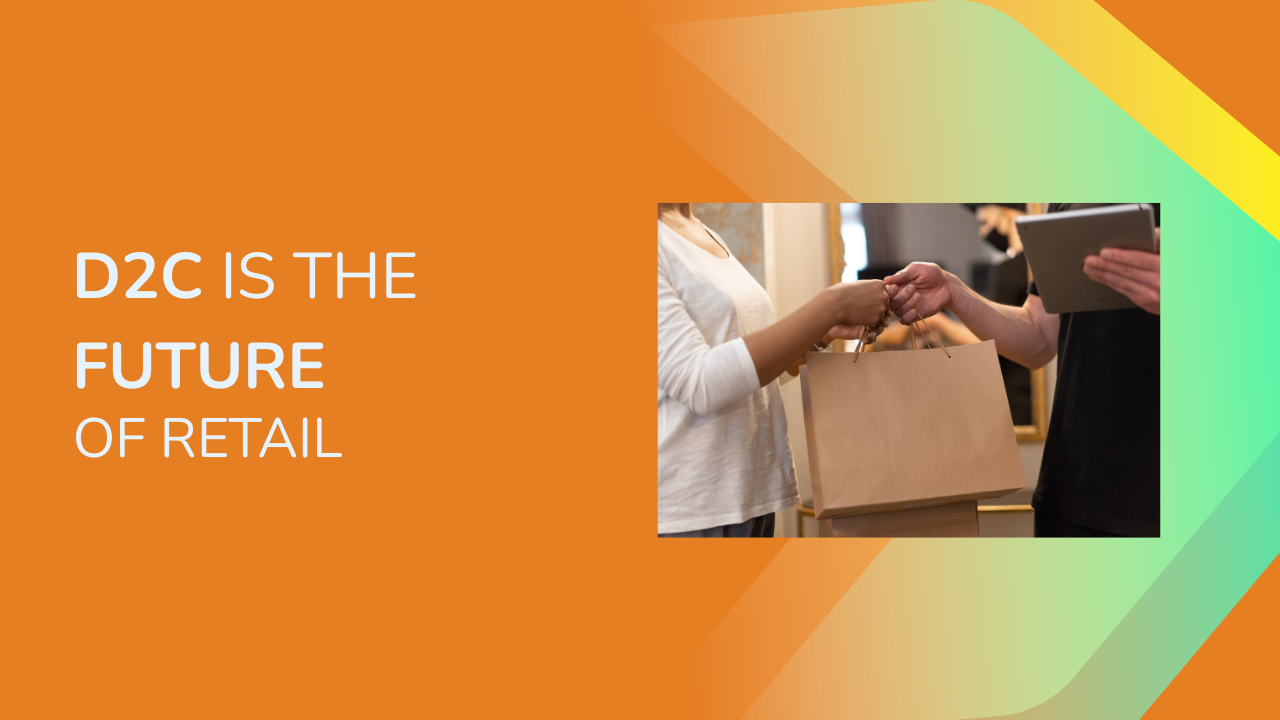Share this Article
Nepal's retail sector is undergoing a profound transformation with the rapid rise of Direct-to-Consumer (D2C) brands. This shift, largely fueled by digital connectivity, is changing how businesses engage with consumers, providing a more personalized shopping experience while also offering cost efficiencies. As Nepali consumers increasingly adopt digital platforms, D2C brands are emerging as the future of retail in the country. This article delves into why D2C brands are reshaping Nepal's retail ecosystem, highlighting the changing consumer behavior, the rise of e-commerce, and the benefits of this model for both businesses and consumers.
1. Changing Consumer Behavior in Nepal
Over the past few years, consumer behavior in Nepal has dramatically shifted. Traditionally, Nepali consumers preferred shopping in physical stores, but with increased internet access and the growth of e-commerce platforms, digital shopping has gained considerable traction. Urban areas, including Kathmandu, Pokhara, and Chitwan, have seen an explosion in online shopping, while even rural regions are gradually catching up.
Convenience and Accessibility:
One of the most significant factors driving this shift toward online shopping is convenience. With the rise of smartphones and internet access, consumers no longer need to travel to brick-and-mortar stores to purchase goods. They can now shop at their own convenience from the comfort of their homes. Moreover, online platforms provide them with the option to compare prices, read reviews, and make informed decisions with minimal effort. This trend is particularly beneficial for consumers in rural areas who face limited access to retail stores.
Expectations of a Seamless Experience:
As digital shopping grows, consumers' expectations are evolving. Nepali consumers increasingly demand seamless, fast, and reliable online shopping experiences. They prefer brands that offer user-friendly websites and mobile apps, quick deliveries, and competitive pricing. D2C brands, which are well-positioned to meet these expectations, are becoming the preferred option for many consumers.
2. The Role of Technology in the Growth of D2C
Technology is at the heart of the D2C revolution in Nepal. The digitalization of retail enables businesses to reach a wider audience, streamline their operations, and create personalized shopping experiences. By leveraging technology, D2C brands can cater to evolving consumer needs more effectively than traditional retail models.
E-commerce Platforms and Social Media:
Social media platforms like Facebook, Instagram, and TikTok play an essential role in the success of D2C brands. These platforms allow businesses to interact directly with their customers, showcase their products, and build communities around their brands. D2C brands can use social media to engage with consumers, build trust, and generate sales.
E-commerce platforms such as Daraz Nepal and SastoDeal also provide D2C brands an opportunity to sell their products to a large audience. While these platforms often charge a commission, they give smaller businesses access to a broader market without the need to build their own e-commerce infrastructure.
Data Analytics and Customer Insights:
A significant advantage for D2C brands is their ability to use data analytics to understand consumer preferences. By analyzing customer data, these brands can identify patterns in purchasing behavior and adapt their marketing strategies accordingly. With this information, D2C brands can offer personalized recommendations, targeted ads, and relevant content, which improves customer satisfaction and loyalty.
3. Cost Efficiency and Brand Control in the D2C Model
One of the most attractive features of the D2C model is that it allows brands to have complete control over their pricing, branding, and customer interactions. This level of control enables businesses to reduce costs, offer better value to customers, and build stronger brand identities.
Eliminating Middlemen:
Traditional retail models involve multiple intermediaries, such as wholesalers, distributors, and retailers, which increase the price of products for consumers. D2C brands, on the other hand, eliminate the need for these middlemen by selling products directly to consumers. By cutting out these layers, D2C brands can offer better prices and retain higher profit margins.
For example, many Nepali D2C brands sell their products exclusively through their own websites or mobile apps. This direct model reduces overhead costs associated with physical stores or third-party retailers, making it easier for brands to offer discounts and competitive pricing.
Full Control Over Branding:
D2C brands have greater control over their branding and messaging. Unlike products placed on shelves alongside competing brands, D2C companies can curate their entire brand experience, from the design and packaging of products to customer service. This ability to control the entire customer journey helps brands create a cohesive narrative and build stronger connections with their customers. For Nepali consumers who value authenticity, the opportunity to create a distinct brand identity is essential for gaining trust and fostering loyalty.
4. Customer-Centric Approach: Strengthening Relationships
One of the biggest advantages of the D2C model is the ability to build deeper relationships with customers. Unlike traditional retail models, where customer interactions are often limited, D2C brands have the ability to engage with their consumers on a more personal level.
Personalization:
D2C brands excel in personalizing their products and services to meet the unique needs of their customers. By analyzing customer data, these brands can offer tailored recommendations, create personalized shopping experiences, and provide targeted marketing. Personalized experiences help build customer loyalty by making consumers feel more connected to the brand.
Direct Feedback and Customer Interaction:
In the D2C model, brands can engage with customers directly through various channels, such as customer support, social media, and reviews. This interaction allows brands to gather valuable feedback, address concerns quickly, and continuously improve their offerings. Consumers appreciate this direct communication, as it creates a sense of trust and transparency. Furthermore, prompt responses to feedback foster long-term customer relationships.
5. Expanding Access to Rural and Underserved Markets
A major advantage of D2C brands in Nepal is their ability to expand into rural and underserved markets. Traditional retail models have often struggled to reach rural areas due to logistical challenges, limited physical infrastructure, and high operating costs. D2C brands, however, are overcoming these barriers by leveraging digital platforms.
Reaching Rural Consumers:
With increased access to mobile phones and the internet, rural consumers are now able to shop online, making it easier for D2C brands to reach them. E-commerce platforms allow D2C brands to cater to underserved markets by providing access to a wider range of products that may not be available locally.
Mobile Connectivity:
The widespread use of smartphones and mobile internet has helped bridge the gap between urban and rural areas in Nepal. With affordable mobile data plans and increasing internet penetration, rural consumers are now able to browse products, compare prices, and make purchases online. Mobile-based transactions have also made it easier for consumers to complete purchases, reducing the reliance on cash transactions and traditional payment methods.
6. Empowering Local Entrepreneurship and Innovation
The rise of D2C brands is also contributing to the growth of local entrepreneurship in Nepal. This model provides Nepali entrepreneurs with an opportunity to start their own brands, reach a global audience, and compete with larger, established businesses.
Supporting Local Businesses:
D2C brands can better reflect local values and culture by offering products that cater to the unique needs of Nepali consumers. This allows entrepreneurs to establish brands that resonate with local audiences while creating a distinctive market position. Additionally, D2C brands can innovate quickly, responding to consumer demands with new product offerings or improved services.
Encouraging Innovation:
D2C businesses in Nepal are not just selling products; they are continuously innovating to differentiate themselves in the market. Whether through new product features, exclusive collections, or better customer service, D2C brands are fostering a culture of innovation. This drive for improvement is essential for the growth and sustainability of the retail sector in Nepal.
Conclusion
The rise of D2C brands in Nepal represents a significant shift in the retail landscape. As consumer behavior continues to evolve, digital platforms and direct engagement with customers are becoming increasingly important. D2C brands offer several advantages, including cost efficiencies, personalized experiences, and better control over branding and customer relationships.
By leveraging technology, cutting out middlemen, and catering to the unique needs of Nepali consumers, D2C brands are poised to transform the retail industry in Nepal. As more entrepreneurs embrace this model, the future of retail in Nepal looks set to be increasingly digital, customer-centric, and innovation-driven. With these advantages in mind, it is clear that D2C is the future of retail in Nepal, shaping the way businesses operate and consumers shop.
Categories:
Platform Comparisons
Tags:
local businesses
,
e-commerce app
,
Small Business
,
strong brand
,
E-commerce
,
Role of Social Media
,
Growing sales
,
strategies
,
Social media
,
Logistics
,
Delivery Networks
,
Flexible Delivery
,
Mobile Platforms
,
Web
,
SEO
,
search engine optimization
,
Global E-commerce
,
Nepali businesses
,
reviews and ratings
,
Dropshipping
,
picture
,
Photography
,
Fraud prevention
,
E-commerce fraud
,
Influencer marketing
,
Boost
,
festival season
,
Top Mistakes
,
key trends







